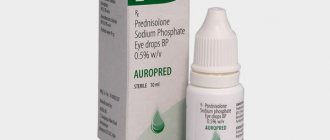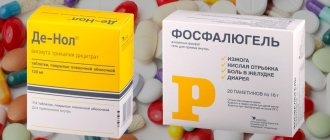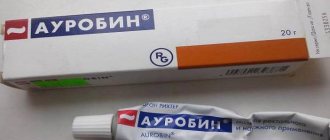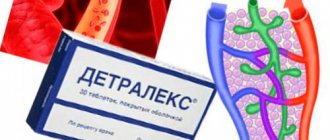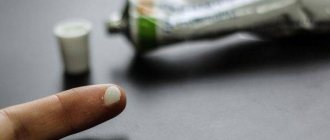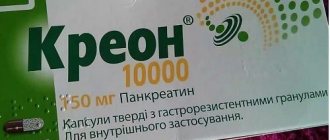Phosphalugel is a drug from the group of antacids that has a pronounced acid-neutralizing, adsorbing and enveloping effect on the gastrointestinal tract.
The active substance is aluminum phosphate. The drug is able to neutralize free hydrochloric acid in the stomach and also reduce the activity of pepsin. Within ten minutes, under the influence of the drug, the acidity decreases to a level of 3.5-5.
Absorbed on the gastric mucosa, preventing the effects of aggressive factors on the mucous membrane of the duodenum and stomach.
In addition, Phosphalugel helps strengthen their own protective mechanisms, does not affect the physiology of digestion, and almost does not cause reactive secretion of hydrochloric acid (HCl). Thanks to the adsorbing effect, bacteria, gases, toxins, and viruses are removed from the gastrointestinal tract. Normalization of the passage of gastrointestinal contents is also characteristic
Release form
The drug Phosphalugel is based on aluminum phosphate in the form of a mineral gel at a concentration of 20%.
The product is homogeneous, translucent and viscous, packaged in sachets of 16 or 20 g. In addition to the main component in the amount of 10.4 g (16 g sachet) or 12.38 g (20 g sachet), Phosphalugel includes:
- additive E420 (glucite 70%) – 4480 mg/4285 mg;
- agarose and agaropectin polysaccharides – 44.8 mg/80 mg;
- pectin substance – 87.2 mg/100 mg;
- Calcium sulfate 2-water – 11.7 mg/10 mg;
- preservative E202 – 40.2 mg/53 mg;
- aromatic additives and purified water.
Phosphalugel is an effective remedy for relieving symptoms of high acidity of gastric juice. The medicine is widely used in gastroenterology for the complex treatment of diseases of the gastrointestinal tract.
Colloidal aluminum phosphate (gel) has a triple therapeutic effect, which is achieved through a combination of antacid, enveloping and sorbing effects. In addition, Phosphalugel has an analgesic effect.
| Active substance | |
| Compound | The drug contains the following substances:
|
| Form | Phosphalugel is available in the form of a gel for oral administration, white, opaque, homogeneous with a pronounced odor and taste of orange. The gel is available in sachets, 16 sachets in a cardboard box. |
The drug is available in the form of a gel intended for oral administration. The gel is placed in special sachets weighing 16 or 20 g.
Phosphalugel is produced by a French pharmaceutical company. However, the price of the drug is not particularly high, given its imported origin. One bag will cost the buyer approximately 20 rubles. The drug is available in pharmacies without a prescription.
How does phosphalugel work?
The essence of the action of phosphalugel is in its atancidal, enveloping and absorbent properties: it seems to line the walls of the stomach and intestines with a protective film, and also simultaneously neutralizes the effect of hydrochloric acid, the main active ingredient of gastric juice, and binds toxins found in the stomach. Let's take a closer look at everything this drug is capable of.
Anaticide properties are the properties to neutralize the increased acidity of the stomach, without making the reaction in it alkaline, and thus without disrupting the digestion process. Phosphalugel achieves this thanks to aluminum phosphate in a colloidal jelly form.
Adsorbent properties are the ability of a drug to absorb, bind and remove toxins and any “extra” substances: fermentation products, gases, harmful microorganisms, etc. This process is ensured thanks to the pectin and agar-agar included in phosphalugel.
The enveloping properties ensure that the drug is not absorbed by the walls of the stomach, which is especially important during intoxication: bound, blocked toxins are immediately eliminated, without entering the circulatory system from the stomach. This effect is achieved thanks to calcium and potassium salts, which form a protective thin film on the mucous membranes, reducing pain, protecting against the effects of acid and facilitating the movement of processed food in the intestines, because the drug contains sorbitol - a substance that not only gives phosphalugel a pleasant sweet taste , but also enhances peristalsis. Moreover, phosphalugel stimulates the production of its own mucus by the stomach and intestines, due to which the tissues receive protection and the ability to recover.
Contraindications and side effects
Phosphalugel is a very safe drug. It can even be given to infants. In addition, the drug can be taken by women during pregnancy and lactation, since it almost does not penetrate the systemic bloodstream and, therefore, cannot harm the child. And yet, the drug has a number of contraindications.
The most common type of side effects is constipation. However, as a rule, constipation with long-term use of the drug occurs only in elderly people or bedridden patients. Therefore, Phosphalugel is prescribed to these categories of patients with caution.
If constipation occurs during treatment with the drug, it is best treated with increased water consumption. It is also possible to use laxatives.
The drug is also prescribed with caution for heart and kidney failure and liver cirrhosis. The drug does not contain carbohydrates, so it can be used for diabetes. Also, the drug does not affect the quality of X-ray examinations of the stomach.
Like any sorbent, Phosphalugel is capable of weakening the absorption of certain drugs into the blood when they are used simultaneously with the drug. However, the drug does not affect the absorption of some substances. These circumstances should be paid attention to by people who, while taking Phosphalugel, are undergoing treatment with other drugs. If you do not know how a particular drug is combined with Phosphalugel, then you should ask your doctor for advice.
In particular, tetracyclines, glycosides and iron preparations should be taken no earlier than two hours after taking the drug.
According to the official instructions, the drug is contraindicated for people who suffer from:
- intolerance to the components of the drug;
- pathological defects in the functioning of the kidneys, progressing to the chronic stage;
- regular difficulties with bowel movements;
- Alzheimer's type dementia;
- severe pain in the abdominal cavity with an unknown diagnosis.
Phosphalugel slows down the absorption of a number of chemicals:
- furosemide;
- bumetanide;
- glycosides;
- iron-based medicines;
- all drugs from the group of fluoroquinolones, tetracyclines.
Note! Exceeding the recommended dose of the drug may manifest itself in the form of constipation, especially in infants, bedridden and elderly patients.
Maalox or Phosphalugel?
Maalox is a suspension, that is, it is a liquid dosage form of the drug. Since suspensions are preferable for the treatment of diseases of the esophagus, in the presence of such pathologies it is better to choose Maalox.
In general, the composition of Maalox is almost identical to that of Almagel. Therefore, all the differences between Almagel and Phosphalugel are also valid for Maalox. That is, Maalox leaches calcium and phosphorus from the blood and bones, which can lead to fragility of bone tissue with long-term use of the drug. This is why pregnant women, the elderly and children should prefer Phosphalugel to Maalox.
In other cases, you can choose the drug that you subjectively like best for some reason. For example, some people are simply psychologically more comfortable drinking a suspension, so Maalox is more suitable for them. And others have heard positive reviews about Phosphalugel from people whose opinion is important and authoritative. In this case, it is better to choose Phosphalugel, since the psychological attitude plays an important role in the treatment of diseases.
How does the drug work?
The drug Phosphalugel is a balanced gel that contains aluminum phosphate, pectin, sorbitol and agar-agar. It has a pronounced acid-neutralizing, adsorbing, enveloping effect. Able to reduce the proteolytic activity of pepsin, bind lysolecithin, bile acids. Thanks to the buffering properties of aluminum phosphate, the drug is able to quickly neutralize the effect of hydrochloric acid, while maintaining the physiological conditions of the digestion process.
Sorbitol has a choleretic, laxative and carminative effect.
Hydrocolloid of agar and pectin complement the function of aluminum in forming a mucous antipeptic layer, which promotes the removal of toxins, microorganisms and gases from the gastrointestinal tract, and normalizes the passage of intestinal contents.
The use of the drug Phosphalugel does not lead to electrolyte imbalance, the development of alkalosis and stone formation in the urinary tract.
The following have a similar therapeutic effect with the drug Phosphalugel:
- Gaviscon suspension;
- Maalox gel;
- Almagel gel.
Before replacing a prescribed drug with its analogue, you should always consult your doctor.
Structural analogues of Phosphalugel include other drugs containing aluminum phosphate. Among such drugs are:
- Alphagel,
- Gefal,
- Gelfos,
- Gasterin.
You can also use other antacids and sorbents as a replacement for the drug, for example:
- Maalox,
- Smecta,
- Almagel,
- Enterosgel,
- Omeprazole.
However, their action differs in many ways from the action of Phosphalugel, so when replacing the drug, you should consult your doctor.
The scope of application of the drug is quite wide. Phosphalugel is recommended for various gastrointestinal diseases associated with impaired gastric acidity, as well as for various disorders of the digestive tract and infections.
Diseases for which Phosphalugel is often used:
- diaphragmatic hernia;
- ulcer of the duodenum and stomach;
- pancreatitis;
- functional diarrhea;
- reflux esophagitis;
- non-ulcer dyspepsia;
- digestive disorders caused by various factors: intoxication, infection, poisoning, including alcohol;
- entry into the stomach of alkaline substances and acids.
The antacid drugs Gaviscon and Almagel have an enveloping and neutralizing effect on the body.
Gaviscon
10 ml of suspension contains:
- sodium alginate – 500 mg;
- sodium bicarbonate – 213 mg;
- calcium carbonate – 325 mg;
- carbomer (974P) - 65 mg;
- methyl parahydroxybenzonate - 40 mg;
- propyl parahydroxybenzonate - 6 mg;
- sodium hydroxide - 26.67 mg;
- sodium saccharinate - 10 mg;
- mint flavor - 6 mg;
- purified water up to 10 ml.
The drug is prohibited for use for:
- children under 12 years old;
- hypersensitivity to the components of the drug.
The medicine is approved for use by pregnant and lactating women.
The suspension is taken orally, up to 4 times a day after meals and 40 minutes before bedtime, 10-20 ml. The maximum daily dose is 80 ml.
In Russian pharmacies, a 150 ml bottle of Gaviscon suspension costs from 170 rubles.
Almagel
Suspension based on aluminum hydroxide (0.3 g) and magnesium hydroxide (0.1 g) in 5 ml of the drug. Bottles are available in a dosage of 170 ml.
Prohibited for admission:
- childhood up to six months;
- pregnancy;
- with intolerance to components;
- dementia;
- functional pathologies of the kidneys and liver.
Adults take Almagel 3 serving spoons three times a day on an empty stomach and before bedtime. The course of treatment lasts until the symptoms are eliminated (no more than 14 days), and the prophylactic dose lasts up to 30-60 days, 1 spoonful at a time. The maximum dosage is 16 scoops per day.
Children take the suspension orally:
- 1/2 dosage spoon – from 6 months to 10 years (twice a day);
- 1 spoon – from 10 to 18 years (2-3 times a day).
The price of a 170 ml bottle of Almagel in Russian pharmacies is 220 rubles.
Phosphalugel analogues
The drug can be replaced with other drugs from the antacid group: Maalox, Relzer, Gastal, Gaviscon. It is strictly forbidden to use chalk, crushed eggshells and baking soda as an alternative due to the risk of extremely serious complications, including those requiring emergency surgery.
In case of poisoning and intestinal infections, in addition to phosphalugel, activated carbon, Smecta, Enterosgel, Enterodes, Laktofiltrum and other drugs from the group of intestinal adsorbents can be used as an astringent and adsorbent pharmaceutical.
What is Phosphalugel taken for?
The sorbent should be drunk with caution and strictly according to the instructions so that the drug does not provoke inhibition of gastrointestinal motility. Read the instructions before use to know exactly how to drink Phosphalugel correctly. The powder can be taken pure or diluted in half a glass of water.
Find out below how to take Phosphalugel for children and adults:
- Adults and children over 6 years old – 1, maximum 2 sachets 2-3 times a day.
- Children after 6 months - 8 g (1/2 pack or 2 teaspoons) after each of 4 feedings.
- Children under 6 months - 4 g (1/4 pack or 1 teaspoon) after each of 6 feedings.
The regimen for using the drug Phosphalugel depends on the disease:
- gastroesophageal reflux disease - the gel is taken before bedtime, after each meal;
- duodenogastric reflux - the gel is taken before bedtime, after each meal;
- peptic ulcer of the duodenum/stomach - the gel is taken 1-2 hours after eating, additionally when pain occurs;
- gastritis - gel is taken before meals;
- functional dyspepsia - the gel is taken before meals;
- paraesophageal hernia - the gel is taken before bedtime, after each meal;
- functional diarrhea - take the gel before meals, at night.
The standard duration of Phosphalugel therapy is no more than 2 weeks.
In case of alcohol intoxication, poisoning of various etiologies, a sorbent with a mild laxative effect helps to cleanse the body and remove, by adsorbing, toxic substances.
Phosphalugel for vomiting caused by poisoning will help soothe the gastrointestinal tract by forming an enveloping layer on the gastrointestinal mucosa, which will help stop the urge to vomit.
It is known that diarrhea is not a disease, but its appearance may indicate disorders, such as poisoning with unhealthy foods, dirty water, or a viral infection. Diarrhea is dangerous because it leads to dehydration of the body and depletion of protective forces in the gastrointestinal tract.
Phosphalugel for diarrhea as an effective sorbent is prescribed at any age. It helps remove toxins and microorganisms from the gastrointestinal tract that can cause diarrhea.
The feeling of nausea can occur for various reasons. The most harmless one is overeating.
But if such a feeling appears often, you need to be examined for the presence of gastrointestinal diseases. Phosphalugel for nausea that appears due to peptic ulcers, pancreatitis, gastritis will help cope with unpleasant symptoms, and is useful in the complex treatment of these diseases as an antacid and sedative.
A stomach disease that is accompanied by severe pain, nausea, vomiting and heartburn during exacerbation must be treated with antacids such as phosphalugel.
By reducing the acidity of gastric juice and enveloping the walls of the stomach, Phosphalugel will relieve unpleasant symptoms for gastritis. You need to take the medicine 30 minutes before each meal, as indicated in the instructions for use. The course of taking the sorbent for gastritis is 14 days.
The cause of an unpleasant burning sensation in the esophagus - heartburn - can be many factors: gastritis, increased stomach acidity, overeating, exposure to certain drugs, etc.
The use of Phosphalugel will help with heartburn of any etiology, because In order to eliminate the burning sensation, it is necessary to reduce the acidity of the juice in the stomach. The instructions for use indicate that Phosphalugel not only reduces acidity for heartburn, but also forms a protective layer that soothes the mucous membrane.
Almost all children aged 6 months to 3 years suffer from an intestinal infection called rotavirus; sometimes adults also suffer from rotavirus, but with less pronounced symptoms. The primary task in treating an intestinal infection is to prevent dehydration.
To do this, it is necessary to stop diarrhea, absorb and remove microorganisms that provoke diarrhea from the intestines. The instructions for use indicate that it is possible to use Phosphalugel for the treatment of rotavirus and other intestinal infections.
Phosphalugel stops the irritating effect of alcohol on the mucous membrane of the gastrointestinal tract. It also quickly normalizes a person’s condition in case of alcohol poisoning.
For heartburn, stomach pain and other unpleasant symptoms associated with alcohol intake, Phosphalugel should be taken in large doses, 2 to 3 sachets every 2 to 3 hours, until the end of the current day. The next day, use of the drug is not required. However, it is necessary to have a bowel movement in the morning; if you cannot do this naturally, then you should give an enema.
In case of alcohol poisoning or hangover, the drug must be taken in the amount of 3 sachets at a time. After 3–4 hours, you should empty your bowels and take 1 more packet of Phosphalugel.
Indications for the use of Phosphalugel differ depending on age. In adults, the drug relieves symptoms:
- inflammatory processes of the epithelium of the stomach or duodenum;
- essential dyspepsia;
- chronic or acute pathology of the digestive system;
- recurrent painless defecation syndrome;
- hernias at the site of a non-physiological opening in the diaphragmatic septum;
- gastroesophageal reflux disease;
- consequences of toxins entering the digestive tract.
What does Phosphalugel help children with:
- inflammation of the epithelial tissue lining the esophagus and stomach;
- gastroesophageal reflux;
- festering wounds on the lining of the digestive organs.
Phosphalugel or Almagel - which is better to choose?
Almagel is a suspension in which aluminum is contained in the form of hydroxide. For pathologies of the esophagus, it is better to take Almagel. It is also preferable to use for the treatment of diseases associated with high acidity of gastric juice in children under 10 years of age.
The antacid effect of Almagel and Phosphalugel is the same. But Phosphalugel has a wider spectrum of action, creating a protective layer on the surface of the mucous membrane of the stomach and intestines. In addition, Phosphalugel does not disrupt the exchange of calcium and phosphorus; when used for a long time, there is no threat of developing bone fragility. Therefore, if long-term use of the drug is necessary, it is better to choose Phosphalugel. But for short-term use and eliminating acute symptoms of indigestion, Almagel is better suited.
In any other situation, you can choose a drug that you subjectively like more for some reason. For example, if a person is more comfortable taking a gel rather than drinking a suspension, then Phosphalugel is more suitable for him. If the gel does not inspire confidence and it is psychologically easier to drink the suspension, then Almagel is more suitable for this person.
What does Phosphalugel help with?
Phosphalugel is indicated for use in the following diseases and conditions:
- Non-ulcer dyspepsia syndrome.
- Chronic or acute pancreatitis.
- Reflux esophagitis.
- Colopathy.
- Dyspepsia of neurotic etiology.
- Functional pathology of the large intestine.
- Gastralgia.
- Chronic or acute gastritis.
- Enterocolitis.
- Ulcer of the stomach and duodenum.
- Symptomatic ulcers of various etiologies.
- Acute duodenitis.
- Proctitis.
- Erosion of the gastrointestinal mucosa.
- Diverticulitis.
- Hiatal hernia.
- Sigmoiditis.
- Diarrhea after gastrectomy.
- Poisoning.
- Heartburn associated with excessive consumption of ethanol, nicotine or coffee, taking medications or dietary errors.
- Prevention of absorption of radioactive elements.
- Gastrointestinal lesions caused by the intake of acids, alkalis and medications.
Pharmacological characteristics
Antacid drug. It has an acid-neutralizing, enveloping, adsorbing effect. Reduces the proteolytic activity of pepsin. Does not cause alkalization of gastric juice, maintaining the acidity of gastric contents at a physiological level.
Does not lead to secondary hypersecretion of hydrochloric acid. Forms a protective layer on the gastrointestinal mucosa. Helps remove toxins, gases and microorganisms throughout the digestive tract, normalizes the passage of contents through the intestines.
Phosphalugel - instructions for use for adults
For adults, the instructions for use of Phosphalugel determine the dosage - 1 sachet three times a day:
- before meals - for pathologies of the colon and stomach;
- 2 hours after eating – for the treatment of ulcerative inflammation and emergency pain relief;
- immediately after eating - when bile refluxes into the stomach.
The drug does not affect concentration and can be used when driving vehicles. Exceeding the recommended dose in the presence of pathologies in the kidneys causes an increase in the level of aluminum ions in blood components.
The use of Phosphalugel is not prohibited:
- during treatment of diabetes mellitus;
- for oncological diseases (during radiation and chemotherapy);
- for the prevention of intoxication with salts of heavy metals and hazardous substances.
Analogs
The most well-known absorbable antacid is baking soda. Sodium bicarbonate reacts with hydrochloric acid in the stomach. A chemical reaction occurs between the protons of the acid and the hydroxide particle in the soda. Other drugs in the same group contain magnesium oxide and carbonate, calcium carbonate, sodium sulfate and phosphate. The substances quickly neutralize the acid that has already been released into the lumen of the stomach, but do not prevent the release of new portions of it by secretory cells.
The reaction products - sodium, magnesium, calcium ions, carbon dioxide molecules - partially penetrate from the intestines into the blood. Mineral elements after absorption can upset the balance of electrolytes, cause alkalosis and hypokalemia. Carbon dioxide puts pressure on the walls of the gastrointestinal tract, causes pain, and increases flatulence. The consequences of treatment may include surges in blood pressure, swelling, and heart failure.
Phosphalugel - instructions for use for children
In pediatrics, Phosphalugel gel is prescribed to children:
- from birth to 6 months – 5 ml up to 6 times a day;
- from 6 months to 6 years – 10 ml every 2 hours during the day after meals;
- from 6 years and older - 15-20 ml after each meal.
Phosphalugel causes difficulty with bowel movements, so if constipation occurs, increase the amount of water your children consume per day. In case of prolonged absence of solid bowel movements, a laxative is given as recommended by the pediatrician.
The medicine is used until the pain and pathological symptoms of the disease disappear, but not longer than 14 days.
The instructions for use of Phosphalugel do not limit its use in childhood. According to indications, the drug is prescribed to infants in the following dosage:
- 1/4 sachet 6 times a day after feeding – from the first day of life to 6 months;
- 1/2 sachet 4-5 times a day after natural feeding or complementary feeding - from six months to 12 months.
Up to 1 year of age, it is recommended to dilute the product with water and give it to children from a bottle after each feeding. After the introduction of complementary foods and in acute conditions (vomiting, diarrhea, severe pain), the medicine is taken in its pure form, undiluted.
If allergies, feelings of nausea, or vomiting occur, stop taking the drug (temporarily or replace it with analogues).
Phosphalugel - instructions for use during pregnancy
If indicated, the drug Phosphalugel gel can be taken by pregnant women. Aluminum phosphate does not cause developmental abnormalities in the fetus and does not have an embryotoxic effect even when the drug is used in the early stages of pregnancy.
Phosphalugel can be taken orally by nursing mothers; no harm to the infant is observed.
During pregnancy, Phosphalugel gel is used from the 13th week to treat and relieve the following symptoms:
- toxicosis - 1 sachet twice a day on an empty stomach;
- heartburn - once before meals during an attack;
- pain - after meals, 1 sachet twice a day.
Exceeding the recommended dosage leads to:
- constipation;
- increased gas formation;
- feeling of heaviness.
Attention! During the first trimester, the use of the medicine is possible only as prescribed by a doctor due to the risk of developmental disorders of the organs and functional systems of the fetus.
Indications for use
Phosphalugel - what does it help with and what can it cope with? The drug will help with such troubles as abdominal pain, a feeling of heaviness, heartburn, acid belching and an unpleasant taste in the mouth, as well as indigestion (diarrhea).
It is indicated for diseases and conditions such as:
- gastritis,
- stomach and duodenal ulcers,
- reflux effect (return of gastric juice into the esophagus),
- dyspepsia,
- liver and gallbladder diseases,
- diseases of the pancreas (pancreatitis),
- food and non-food poisoning,
- unhealthy diet with an abundance of spicy, fatty and fast food,
- binge eating,
- intestinal infections,
- alcohol intoxication,
- taking medications that negatively affect the gastrointestinal tract,
- negative consequences of radiation therapy in cancer patients,
- toxicosis of pregnant women,
- colic in newborns and problems with the absorption of complementary foods in young children.
The regimen and dosage of the drug always depend on the main diagnosis and the severity of accompanying symptoms, and are prescribed by the attending physician. If you follow medical recommendations, the drug can be used for a long period of time without harm to health. The drug is not used simultaneously with other medications, so as not to block their action and not bind their active substances: phosphalugel is prescribed 2-4 hours before other medications.
Phosphalugel in bags - instructions for use
A 16 g sachet is more convenient to use for treating children due to the lower dosage.
| Child's age | Single dosage (ml) | Number of appointments per day (times) |
| 0-6 months | 5 | Until 6 |
| 6 months – 6 years | 10 | 4-5 |
| Over 6 years old | 15-20 | 3-4 |
Adults are encouraged to use 20 g sachets with a higher content of active substance for potentially large areas of inflammation. Adults take 1 sachet 3-4 times a day.
To take Phosphalugel gel, follow the following scheme: 1. When closed, knead the contents of the sachet with your fingers until smooth.2. Hold the bag upright and open it.3. Squeeze the gel into a tablespoon or into a glass with 120 ml of clean warm water, stir.4. After taking the drug, refrain from eating and other medications for 2 hours.
What about side effects?
When taking this drug, a number of side effects may develop, which cause negative reviews of Phosphalugel from patients. The following side effects have been registered: vomiting, nausea, constipation, changes in taste, allergic reactions. To prevent the development of side effects, it is necessary to use Phosphalugel only as prescribed by a doctor and follow the dosage regimen. It is also recommended to increase fluid intake, especially in bedridden patients.
With long-term use of Phosphalugel in high dosages, the development of hypocalcemia, hypophosphatemia, hypercalciuria, osteoporosis, osteomalacia, hyperaluminemia, nephrocalcinosis, and encephalopathy is possible.
What are the reviews?
Reviews about Phosphalugel are almost 100% positive, due to its effectiveness in eliminating symptoms of increased gastric acidity, as well as in the treatment of poisoning and pancreatitis. Thus, many people note that they carry Phosphalugel sachets with them all the time, since if heartburn, nausea or diarrhea develops, you can drink the gel anywhere. In this sense, the drug is very convenient - it does not need to be washed down with water, tea, etc. Almost everyone who has taken Phosphalugel notes its high effectiveness compared to other agents, as well as ease of use.
In addition, a positive opinion about Phosphalugel is contributed by its wide spectrum of action, which includes alcohol and food poisoning, diarrhea, common heartburn, and nausea due to gastritis. Many people took Phosphalugel for heartburn, but at critical moments they were able to appreciate its high effectiveness in treating food poisoning.
Negative reviews about Phosphalugel are isolated, and they are due to the ineffectiveness of the drug in this particular case. People who left negative reviews about Phosphalugel believe that the drug did not help them.
Phosphalugel - instructions for use for vomiting
For nausea and vomiting of unknown origin, as well as during the acute phase of poisoning, the drug Phosphalugel is given to children in a double dose:
- half of the sachet at once - for newborns and children up to 6 months;
- whole sachet – from six months to 6 years;
- 2 sachets – from 6 to 18 years.
Attention! Before use in infants, consult a pediatrician.
At subsequent doses, the dosage is reduced to the recommended for age:
- 0-6 months – 1/4 sachet maximum 6 times a day;
- from 6 months to 6 years – 1/2 sachet after each meal;
- children over 6 years old and adults – a whole sachet 3 times a day.
Phosphalugel - instructions for use for diarrhea
One of the possible indications for emergency use of the drug Phosphalugel is loose, painless, but continuous stool.
In such cases, adults take 2 sachets after the first bowel movement and 1 sachet after subsequent ones, but no more than 6 per day.
In children, diarrhea is stopped with the following dosage:
- 1/2 sachet every 2 hours – up to 12 months of age;
- 1 sachet three times a day – from 1 year to 3 years;
- 4 sachets divided into 2 doses - from 3 to 18 years.
Important! With diarrhea, the body loses fluid in an intensive mode, therefore, along with taking Phosphalugel, it is necessary to restore the water balance.
If diarrhea does not stop within 12 hours while taking it, you should seek medical help.
Phosphalugel - instructions for use for heartburn
Phosphalugel gel for the treatment of heartburn is taken by adults on an empty stomach in a dosage of 2 sachets twice a day. If heartburn occurs against the background of gastritis or peptic ulcer, then the dose is rescheduled for a period of time from 1 to 2 hours after meals, no more than 3 times a day, 1 sachet.
Treatment of heartburn in children is carried out in the following dosage:
- up to six months – 1/2 sachet per day for 6 doses;
- from 6 months – 2 sachets, divided into 4 uses;
- from 6 years – 2 sachets twice a day.
Note! For heartburn, it is not recommended to dilute the medicine with water: this way the gel envelops the walls of the esophagus and acts faster.
special instructions
If constipation occurs while taking the drug, doctors recommend increasing fluid intake. Phosphalugel does not affect X-ray examination and can be used in combination with other medications. Doctors do not recommend taking the medicine for a long period, and you should not use it systematically.
Phosphalugel is a safe drug, but many still prefer to use cheaper analogues of drugs that may have an identical composition or have the same mechanism of action. Popular analogues of the drug include Almagel, Gasterin, Gastal, Rennie. Before purchasing any analogue, you need to consult with a specialist and carefully study the instructions for use.
Gastritis and its main manifestations
Gastritis is a change in the inner mucous membrane of the stomach under the influence of negative factors. These may be bacteria, helminthic infestations, certain medications (for example, aspirin) or poor diet. Over time, epithelial cells atrophy and normal glands are replaced by fibrous tissue. All this leads to improper functioning of the digestive tract.
Medicine knows different forms of gastritis, the symptoms of which may differ. Some patients are not bothered by this disease at all, but are discovered only during examination. Others suffer from heaviness and pain in the stomach, they are tormented by bloating, nausea, and reflux. In both cases, the pathology must be treated. Find out more about the drug "Phosphalugel": how to take it for gastritis, in what quantity and for how long. Often this medication is prescribed in combination with others, which also needs to be taken into account and you need to know in what order to use them.
Phosphalugel tablets - instructions for use
The drug Phosphalugel is available exclusively in gel form, due to the following advantages over tablets:
- The gel has a uniform viscous consistency, enveloping the walls of the esophagus and stomach.
- The liquid substance is easier to swallow; you do not need to drink it with water.
- Convenient for treating children (no need to crush like a tablet) and for problems with swallowing function.
In cases where it is necessary to take an antacid in the form of tablets, analogues are selected:
- Gastal containing 0.45 g of aluminum hydroxide-magnesium carbonate gel and 0.3 g of magnesium hydroxide. Adults and adolescents over 12 years of age and weighing more than 50 kg are prescribed 1-2 tablets an hour after meals. Children from 6 to 12 years old are prescribed 0.5-1 tablet. For heartburn, the drug is taken regardless of food intake.
- Alumag based on aluminum hydroxides (0.2 g) and magnesium (0.2 g). A single dosage for adults is 2-4 tablets 1-2 hours after meals and at night. No more than 16 tablets divided into 3-4 doses are indicated per day. The course of treatment is 2-3 months. Grind the tablet before use.
- Tisacid, the active effect of which is provided by aluminum-magnesium hydroxycarbonate (0.5 g). The tablets are taken whole with water, 1-2 hours after meals. Adults take the drug 3 times a day, 500-1000 mg, children over 6 years old - 250-500 mg.
Phosphalugel suspension - instructions for use
Phosphalugel sachets are not produced in the form of a suspension due to their similarity to the consistency of a gel. The main differences between these dosage forms:
- suspension is a chaotic mixture of solid particles and liquid, and the gel has a homogeneous structure;
- the gel has a more gentle effect on mucous membranes than the suspension;
- the suspension is liquid, it is produced in polyethylene bottles, and the gel is packaged in convenient portioned sachets.
Analogues of antacid mineral gel in the form of a suspension are the following drugs:
- Maalox (magnesium and aluminum hydroxides) is taken 1 sachet by adults and adolescents over 15 years of age 1-1.5 hours after meals. No more than 6 doses of the drug are indicated per day;
- Anacid forte (magnesium hydroxide in combination with algeldrate) is taken 1-2 hours after meals and before bedtime, for peptic ulcers - half an hour before meals. The drug is taken 3 times a day, 1/2 teaspoon for children 4-12 months old, 1 teaspoon for children over 1 year old, 5-10 ml for adults and adolescents;
- Coalgel 60 (aluminum and magnesium hydroxide) is taken orally, 5-10 ml after meals and at night; for acute pain, the single dose is increased to 15 ml. Maintenance therapy lasts 2-3 months.
